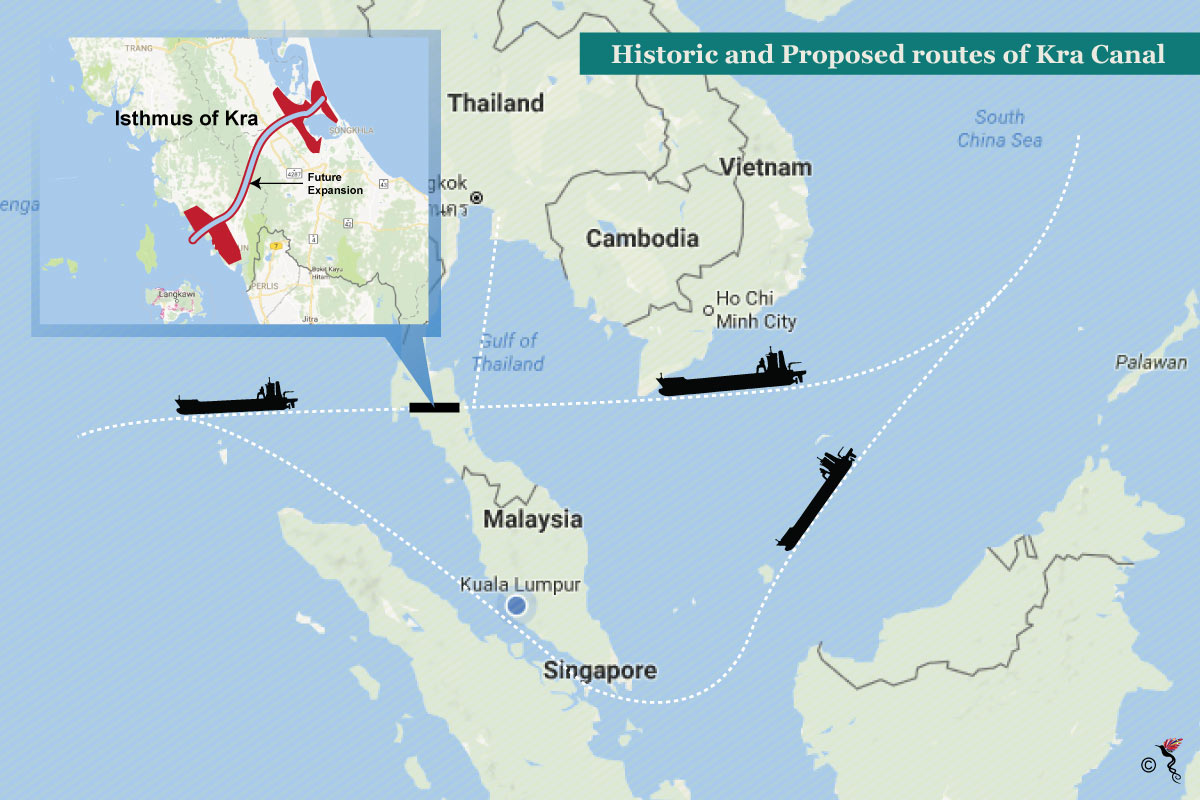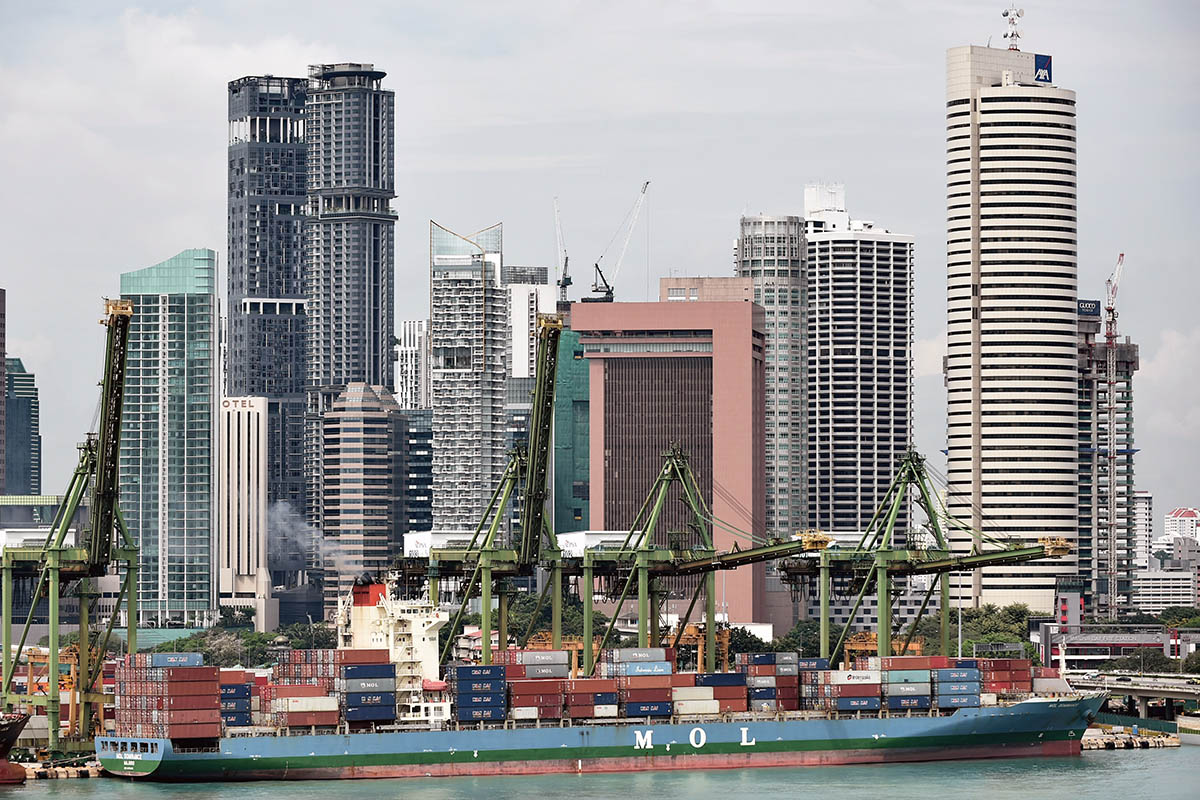The Kra Canal – also known historically as the Isthmus of Kra – is a proposed canal spanning 102 kilometres which would connect the Gulf of Thailand with the Andaman Sea. The construction of the canal would serve as an alternative to the current maritime trade route that passes through Singapore and the Straits of Malacca.
The proposed construction of the Kra Canal that would save approximately 12,000 kilometres, or two to three days of sailing time for traders has recurred in recent times.
In ‘Leaves of the Same Tree: Trade and Ethnicity in the Straits of Melaka’, renowned historian and author Leonard Andaya states that the Transpeninsular or Transisthmian route which included the Isthmus of Kra was used by Persian and Arab traders to Southeast Asia and China in the late seventh century because it cut down sailing time which allowed them to trade more frequently in the region. Nonetheless, this route was only used by traders who had smaller cargo as the lack of development of the Ithmus caused difficulty for traders with bigger ships.
Another factor that has caused the idea to relapse over the past few years have included the interest by investors from China because of their financial, technological and strong political potential. Earlier in September, a group of influential figures and businessmen with Chinese ties backed an economic feasibility study for the Kra Canal.
The history behind the isthmus
The emergence of this idea goes all the way back to the late 17th century when French Engineer De Lamar conducted a feasibility of a canal to connect Songkhla with Marid (now known as Myanmar), at the request of Siam’s King Narai. The idea was then dematerialised due to its technological unfeasibility at that point of time.
However, the plan resurfaced a century later under the rule of King Rama I, but to no avail. The Thai Monarch had recognised the importance of the proposed canal in order to facilitate its troop movements.
At the same time, the British East India Company also tried to conduct a survey but discarded the project because of the mountainous inlands that would increase costs of development. In the late-19th century, the British Empire – in the interests of protecting the dominance of Singapore as a major regional hub, agreed that it would not build a canal through the Isthmus of Kra.
This policy was then materialised as Article 7 of the 1946 Anglo-Thai Treaty which states that “The Siamese Government undertake(s) that no canal linking the Indian Ocean and Gulf of Siam shall be cut across Siamese territory without the prior concurrence of the Government of the United Kingdom.”

Historic and proposed routes of Kra Canal.
Following the European decolonisation and Thailand’s advent as a constitutional monarchy, the Kra Canal received little to no attention until the 1980s when American and Japanese firms pitched various methods of constructing the canal to the Thai government. In 1990, the Asian Financial Crisis bolstered interest in the canal once again.
During this time, Japan’s Global Infrastructure Fund (GIF) conducted a feasibility study, which estimated a cost of 20 billion dollars for a 50 kilometer canal across the Isthmus of Kra. However, the project was disregarded once again during Thai Prime Minister, Thaksin Shinawatra’s tenure from 2001 to his upheaval in 2006.
What will the implications be on Southeast Asia if the proposed construction takes place?
If the construction takes place, the Kra Canal would alter the strategic and economic landscape of Southeast Asia. However, if it doesn’t, “there will probably be a quiet sense of relief that the Kra Canal project is a no-go for now. In any case, the scale of any proposed Kra Canal project would have made it a huge construction project and a logistical challenge to pull off, even if the green light had been given for the project,” stated Davin Chor, Associate Professor at the Department of Economics at the National University of Singapore.
“But this is an issue that will never go away entirely. I would not be surprised if there were some attempt several years down the road to try to revive or re-examine the feasibility of a Kra Canal,” he added.
The century-old idea also represents a significant opportunity to strengthen Southeast Asian cooperation if it were to be realised. There will also be deeper geopolitical implications of the Kra Canal. For now, the Kra Canal remains a burried ambition and only time and political capital will determine if it will one day materialise.
Recommended stories:
